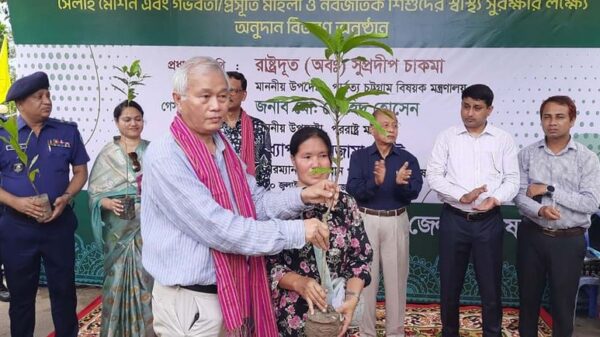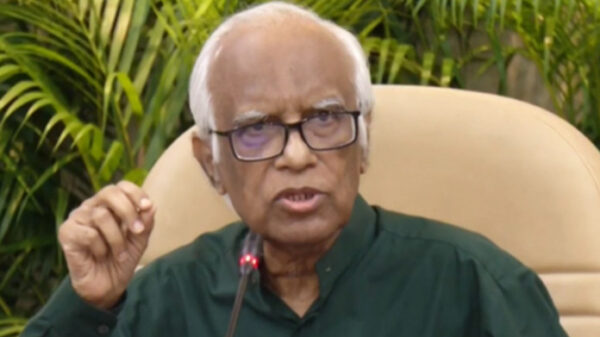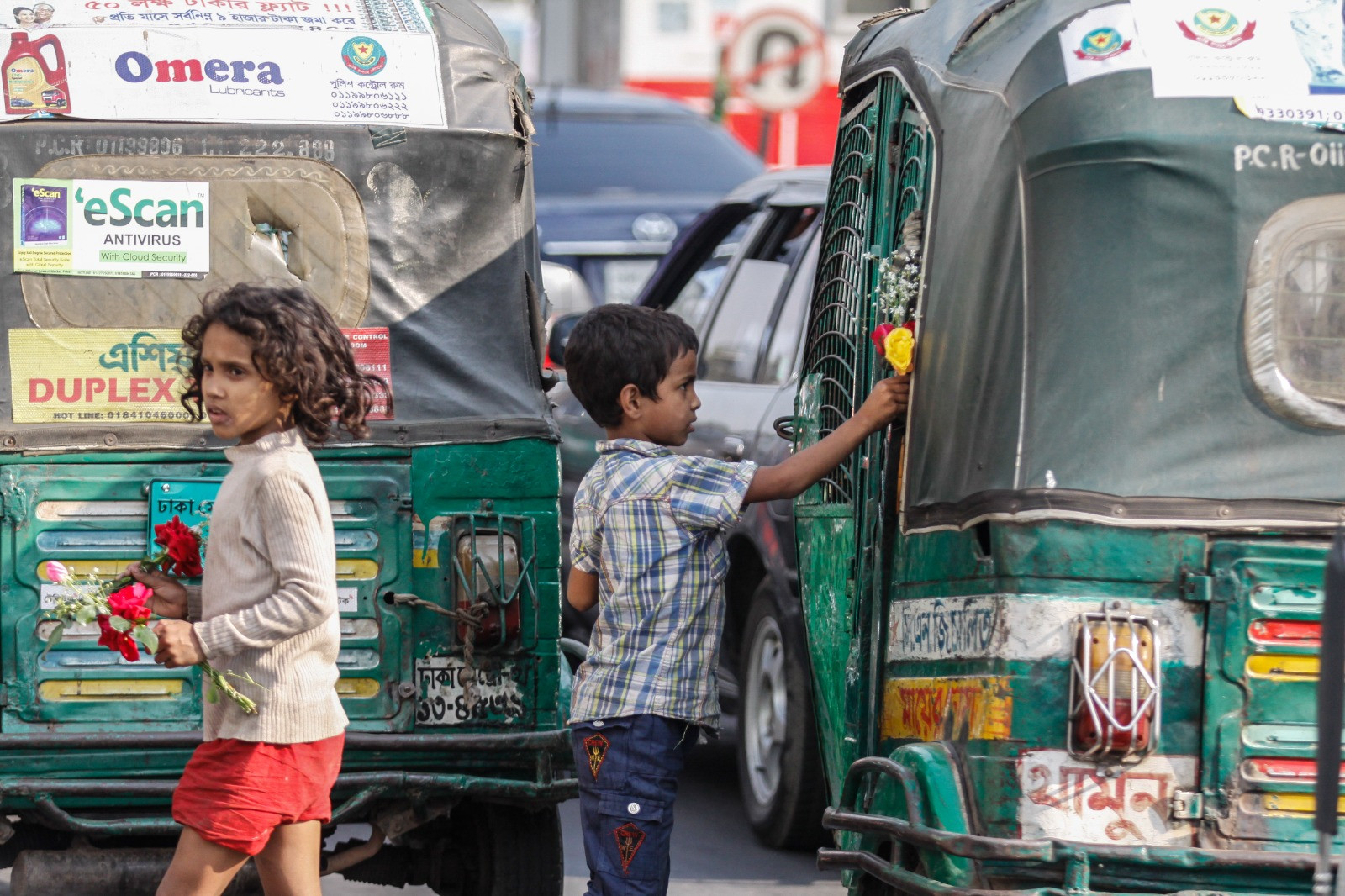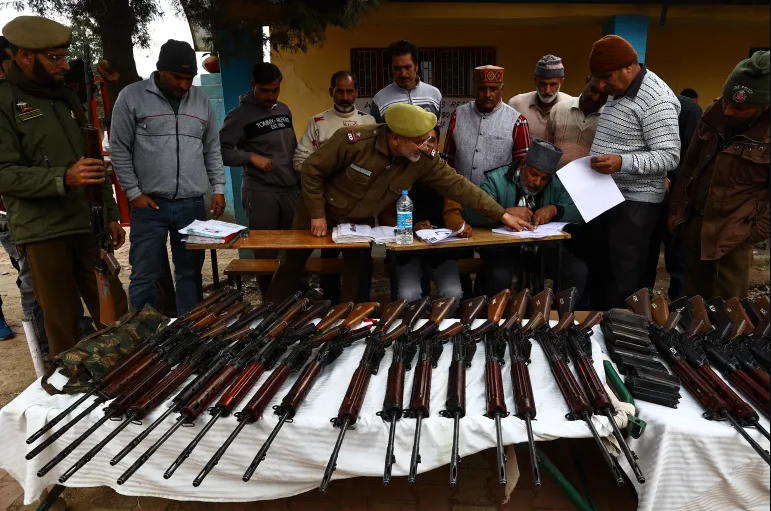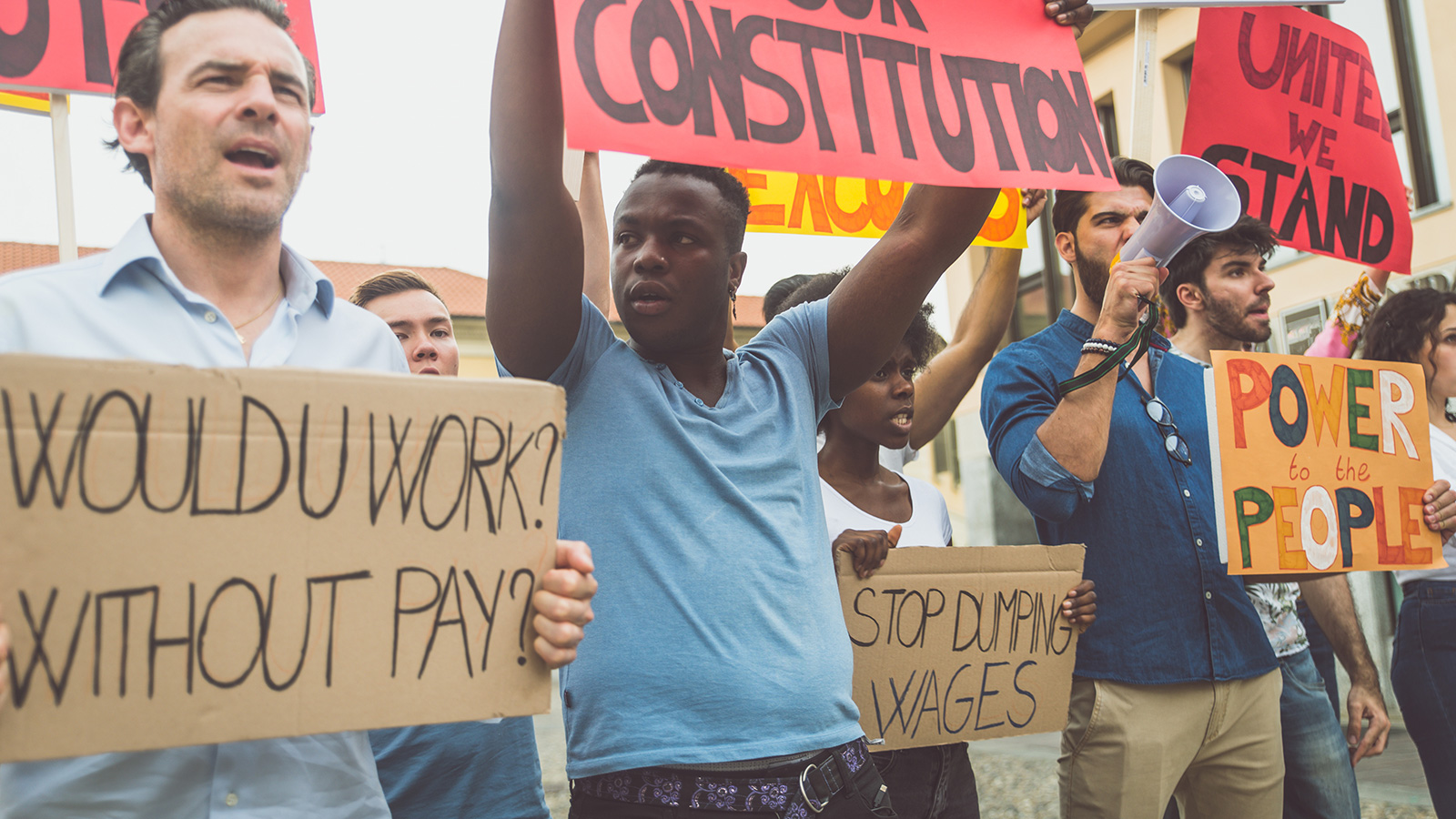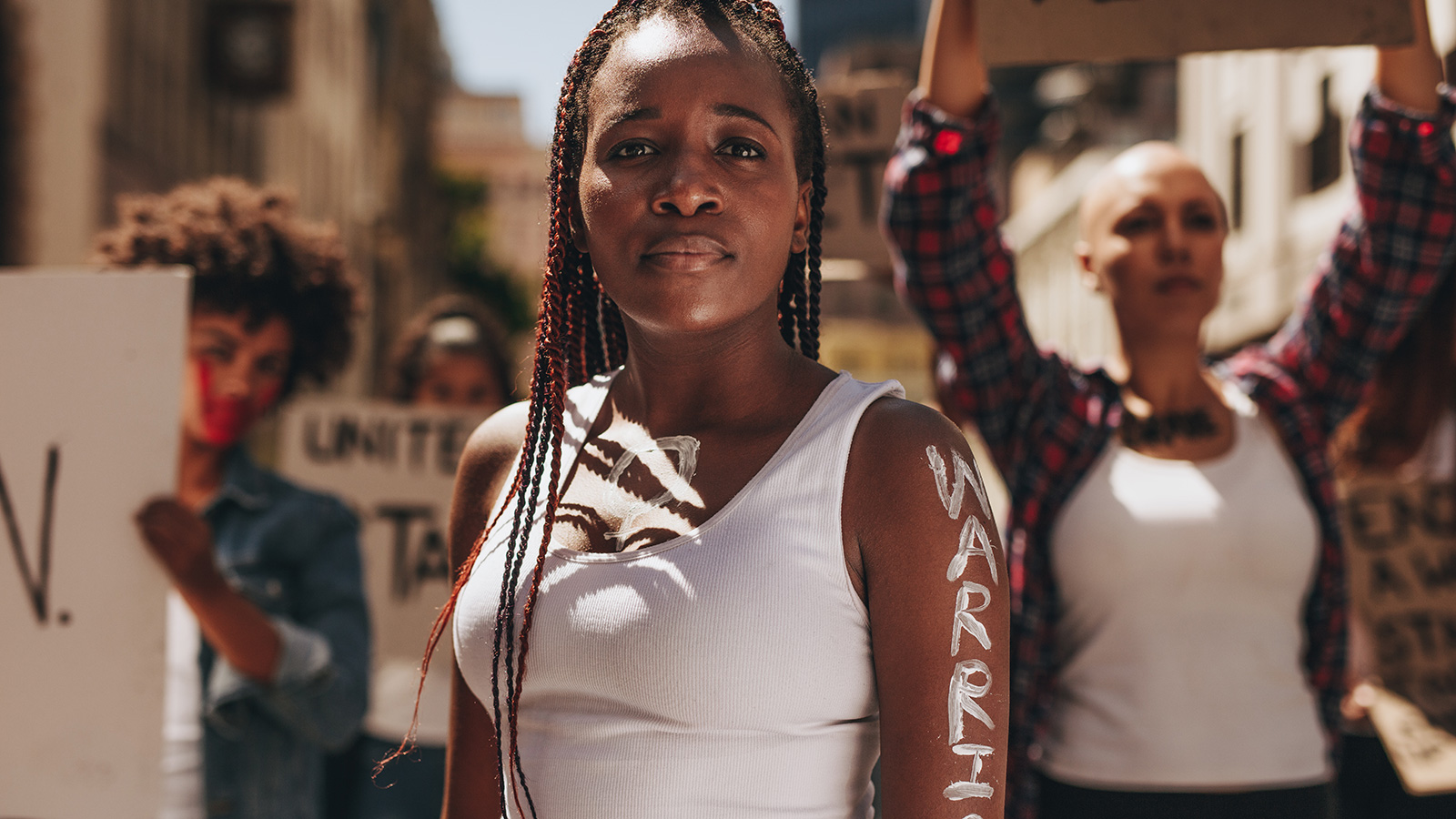Staff Reporter:
Fatema, an 11-year-old street child, sells flowers mostly on the Dhaka University campus to make a living. She sometimes walks as far as Rabindra Sarobar in Dhanmondi in search of customers.
She leaves no stone unturned to make sure all the flowers she carries are sold, as her income is critical for her family’s survival. After a day spent in ceaseless work, she usually returns to her Shahbagh shanty exhausted.
On average, she earns Tk300 a day. If luck smiles on her, she earns as much as Tk400. Fatema constantly feels the pressure to earn more as she is the sole breadwinner of her family.
“My father died during the Covid-19 pandemic. I have my ailing mother and younger sister to take care of,” she said.
According to the Bangladesh Institute of Development Studies (BIDS), the number of street children stood at 1.5 million in 2015, and will reach 1.56 million in 2024.
Children living out life on the streets in Bangladesh face deprivation, extreme poverty, malnutrition, disease, illiteracy and violence, according to a joint study by the Bangladesh Bureau of Statistics and Unicef earlier this month.
According to the survey, most of these children are boys (82%), the majority of whom end up on the streets either due to poverty or in search of work.
Approximately 13% are disconnected from their families, and about 6% are orphans or do not know if their parents are alive.
Narrating her ordeal, Fatema said: “I don’t want to stay in a roadside hut. But I have no choice.
“I know if I can’t make money, there is nobody else to feed me and my family,” she said, her brows furrowed in worry.
When asked how it feels to be outdoors throughout the day, Fatima said: “It is distressing to always be on the roads under the scorching heat, during heavy downpours and also in shivering cold.”
Grim conditions
Nearly one in three street children live and sleep in public or open spaces without the most basic amenities, such as a bed to sleep in, a door to close for safety and comfort, or a toilet, says the study.
About half of the children surveyed go to sleep with only a jute bag, pieces of carton or plastic, or a thin blanket between themselves and the bare ground.
Roughly 7% of children sleep alone while 17% seek protection and comfort by sleeping in pairs or groups.
One in three (30.4%) experience incidents of violence occurring as they sleep, as reported by children.
Working to survive
Forced to work to earn a livelihood – mostly in waste collecting, begging, or in tea stalls, factories and workshops – these children are at daily risk of injuries and violence.
A third of the children surveyed reported being injured when working, while half were subjected to violence.
Almost half of the children working were forced to start at the early age of nine. Most of these children are working 30 to 40 hours per week for less than Tk1,000 per week.
Illiteracy, illness and isolation
Three in four (71.8%) children in street situations can neither read nor write, leaving them with a lifelong handicap and grim prospects for the future.
Over half of the children surveyed reported falling sick within the three months prior to the survey, suffering from fever, coughs, headaches and waterborne diseases.
Most of the children (79%) were unaware of the support they can get through organizations that provide services for children in street situations.
“The emerging reality of street children shows the need to provide inputs towards developing policies and action programs to combat the situation of street children in the country,” said Planning Minister MA Mannan when the study was launched.
When contacted, Abdus Shahid Mahmood, director of Bangladesh Shishu Adhikar Forum, said that there is a need to ensure proper implementation of the Children Act, 2013 so that street children can get access to proper support.
“Our society and the people should also change their mindset towards street children,” he said.
















